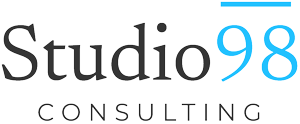There’s a lot more that goes into SEO than picking a great keyword for your post.
If you’re not taking the time to work behind the scenes to make sure your on-page SEO is on point, then you’re going to have a hard time ranking with Google.
Keep reading to get a custom web designer’s inside opinion on what you should be doing for your website’s on-page SEO.
Check All Your Tags
The first part of on-page SEO you want to check is your tags. There are three types of tags we’re going to focus on, and each one is important in its own way.
Meta Tags
Meta tags are only found in the code of the page and are designed specifically to let Google know what’s on the page.
H1 and H2 Tags
H1 is heading one, H2 is heading two, and so on. When you have text tagged as H1 or H2, this text is what search engines look at first to determine what the page is about.
Image Tags
This is another type of tag that only exists in the code of the page but bears just as much importance as the others. Image tags tell Google what the image is about which can help it view your page as more relevant.
Know Where to Include Keywords
Where you place your keywords is something else that matters to on-page SEO.
Here are a few places you should include them:
- First 100 words of content
- URL of the post
- Meta tags
- H1 tags or the title of the post
- H2 tags
- Image tags
Remember that you don’t need to have the exact same keyword in everything. In fact, using a variety of keywords can help you rank for more of them.
Other Things to Watch For
Here are a few more things that you should watch for when working on your on-page SEO.
Mobile-Friendly Design
Google now penalizes websites that aren’t mobile friendly. Since over half of searches are now done from mobile devices, this makes sense. So, make sure your website is mobile friendly.
Page Loading Times
If your webpage isn’t responsive, visitors won’t stay long. You’re not only losing leads that way, but you’re also dropping in the search rankings.
Inbound and Outbound Links
The last thing you can do to help your on-page SEO is to use inbound and outbound links.
Inbound links point to other pages on your site which encourages people to stay longer while outbound links show Google what other content is relevant to yours.
Want More Insights from a Custom Web Designer?
Now you’ve got a few things you can use to improve your on-page SEO and help your website soar in the search results. Although they may seem small, these improvements can have a huge impact on your ranking.
If you want more insights from a custom web designer, be sure to check out more of our blog. There, you can find tons of articles and information on everything you need to run your online business, including this article about local SEO.

